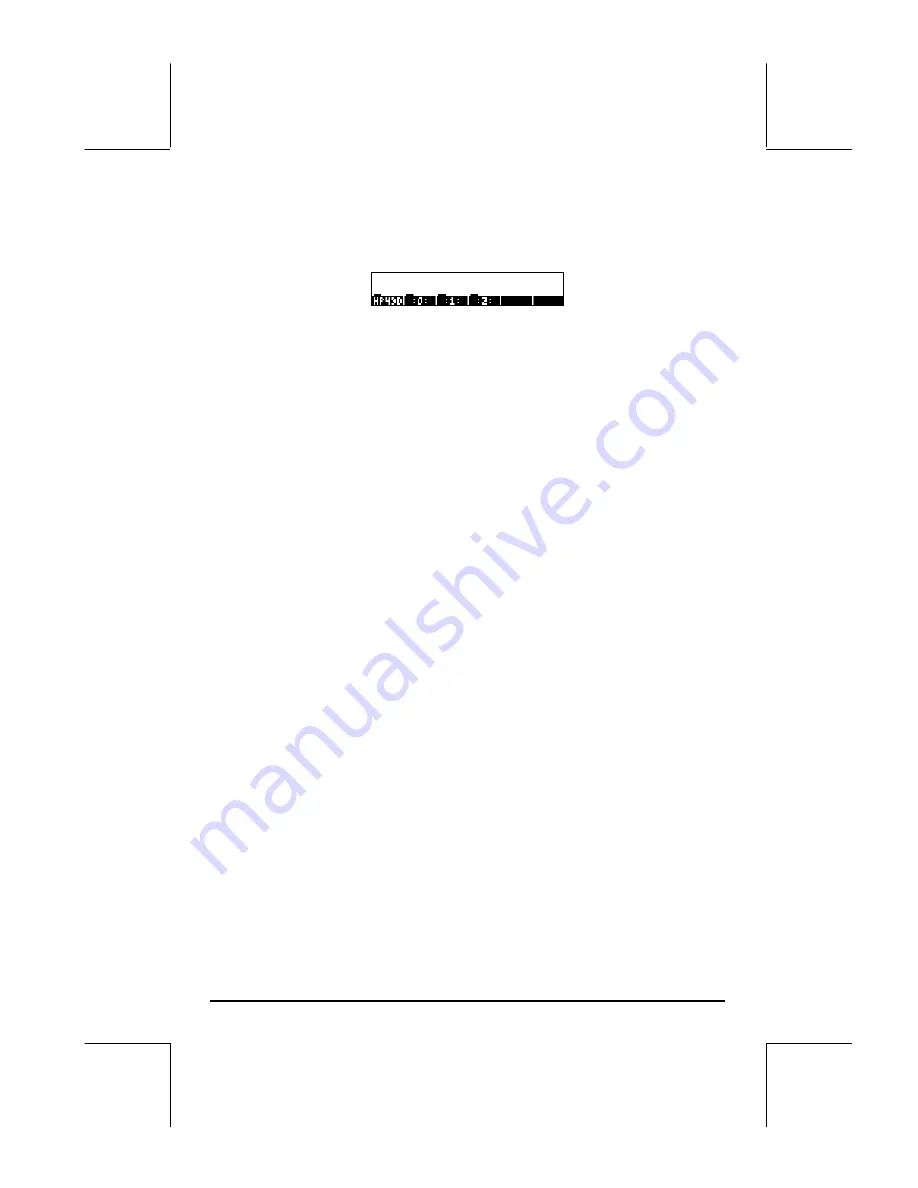
Page 26-3
Another way to access port memory is by using the LIB menu (
‚á
,
associated with the
2
key). This action produces the following screen:
If you have any library active in your calculator it will be shown in this screen.
One such library is the
@)HP49D
(demo) library shown in the screen above.
Pressing the corresponding soft-menu key (
A
) will activate this library.
Pressing the port soft menu keys will open that memory port. Additional
information on libraries is presented below.
Backup objects
Backup objects are used to copy data from your home directory into a
memory port. The purpose of backing up objects in memory port is to
preserve the contents of the objects for future usage. Backup objects have the
following characteristics:
•
Backup objects can only exist in port memory (i.e., you cannot back
up an object in the HOME directory, although you can make as many
copies of it as you want)
•
You cannot modify the contents of a backup object (you can, however,
copy it back to a directory in the HOME directory, modify it there,
and back it up again modified)
•
You can store either a single object or an entire directory as a single
backup object. You cannot, however, create a backup object out of a
number of selected objects in a directory.
When you create a backup object in port memory, the calculator obtains a
cyclic redundancy check
(CRC) or
checksum
value based on the binary data
contained in the object. This value is stored with the backup object, and is
used by the calculator to monitor the integrity of the backup object. When
you restore a backup object into the HOME directory, the calculator obtains
again the CRC value and compares it to the original value. If a discrepancy
is noticed, the calculator warns the user that the restored data may be
corrupted.















































